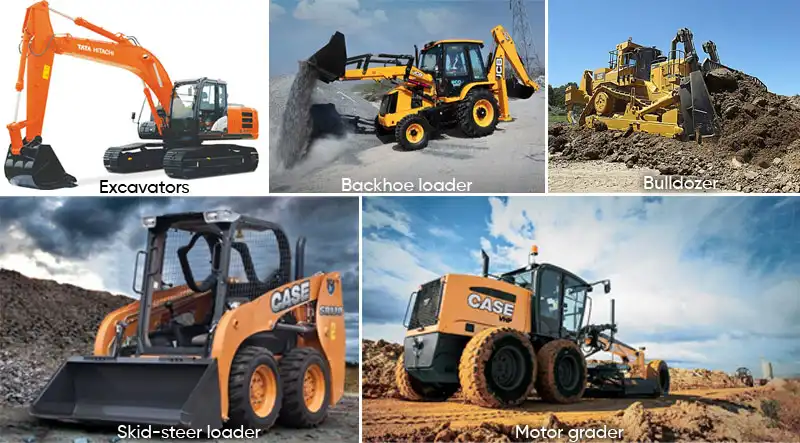The focus on public infrastructure development is driving the demand for off-highway construction equipment. Moreover, continued advancements in product technologies, coupled with stringent government regulations. The off-highway vehicle lighting landscape is evolving continuously as manufacturers offer products based on the latest technologies to ensure more safety and improved performance. Different types of heavy off-highway construction equipment are being used in India ranging from large mining trucks to earthmoving equipment. There has been an increase in the demand for advanced, zero-emission equipment, and electric machines owing to stringent government norms and rising awareness about the environment, Manufacturers also investing in the research and development of off-road equipment, in terms of its electrification and hybridization to meet the demand for electric machinery and zero-emissions equipment. Technological advancement of off-highway construction equipment is taking place. Discussed below are different technological advancements taking place in off-highway construction equipment in India.
Off-highway construction equipment in India
Earthmoving equipment
Earthmoving equipment is heavy equipment, typically heavy-duty vehicles designed for construction operations that involve earthworks. They are used to move large amounts of earth, moving and to dig foundations etc. Different types of earthmoving equipment include Excavators, Loaders, tractors etc. The new hybrid models now manufactured have the lowest ever fuel consumption and have also been designed to further reduce CO2 emissions and running costs. Incorporating proven technology, an advanced hydraulic system and lightweight arm, it achieves this without compromising on high levels of performance and easy operation. One of the key benefits of hydraulic machinery is the ability to achieve motion via hydraulic actuators such as cylinders and swing motors. And when hydraulics are combined with modern technology such as grade control, laser positioning, and GPS, the potential seems almost endless. Manufacturers are also incorporating more sophisticated hydraulic functions that allow the operator to adjust hydraulic flow to the application. Hydraulic upgrades on the latest models include selectable modes to optimize available hydraulic speed and power, plus a manual throttle dial to adjust engine speed and power as needed.

The models come with Active Control, an automated grading machine control system. It allows operators to get the right depth and angle, reducing grading times. The system is powered by the Dig Assist application, which is operated via a tablet. The system guides the operator through the functions to automate the digging process. One significant development and trend in this regard for wheeled excavators is hydraulic system management. Functioning and movement of a hydraulic excavator are accomplished through the use of hydraulic fluid, hydraulic cylinders and hydraulic motors. Another standard new feature that stands out is the Fine Swing function which minimizes the shaking that a lifted object undergoes at the start or stop of a swing movement with the excavator, to increase operator comfort with smooth movements and to help to protect the safety of nearby workers.
Mining equipment
Given the competitive landscape that is evolving the mining industry is seeing a demand for digging to greater depths. For mining companies to remain competitive, this will require further innovative designs and technologies that improve the capability, efficiency, and reliability of mining systems responsible for sensing, analyzing, extraction, and refinement. Manufacturers are now coping with the demand and coming with machines that fit the terrain requirements. Apart from conventional equipment the need for precise details has enabled the need for automated equipment in mining. The advances in mining equipment are very promising. Incorporating automated systems that offer greater productivity, proposing new technologies to aid in the discovery and accurate quantifying of deposits, and systems capable of real-time analysis to increase efficiency and profitability, all stand to not only change but modernize the entire mining industry.

Modern mining equipment models produce a unique gyratory vibration motion that creates a more even product distribution, and it can be extremely useful in separating materials with different shapes in different angles. Mining equipment comprisesJumbo drill rigs, Dump trucks, Crushers, Feeder, Screeners etc. The modern easy-tension screening material allows operators to make minute adjustments without extended downtime. These models of rectangular screeners and separators are designed and oriented to improve mining materials processes by separating different materials sizes as well as de-dusting mining materials from unwanted undersize particles. Modern screens are injection moulded or hand casting a combination of high-quality materials. They are added with specialized aperture configurations which reduce pegging and blinding. Latest feeding equipments are designed with an intense commitment to quality and attention to detail, providing many years of service life. In modern feeding equipment when the plate feeder works, the electromotor and the reducer drive the sprocket with an alveolus structure to rotate, so that the hauling chain that engages with the chain wheel will drag the material through in which there are materials to move forward. The supporting device-hauling chain moves on the thrust wheel and the riding wheel props with the conveying through to bear the weight of the materials and the running devices. Modern dump trucks come with customized cylinder engines designed to ensure excellent driving characteristics, high reliability and excellent fuel efficiency. The engine’s power is available virtually from idling speed, which ensures excellent starting traction.
Conclusion
Discussed above are different technological advancement taking place in off-highway equipment. They are being used through off-road vehicles to perform tasks on the ground, above, or below the ground. Manufacturers are increasingly investing in R&D to standardize features so that it can minimize the efforts of skilled labourers and increase project efficiency.

